London 2012: Architecture and Masterplan Overview
Video
London, England, hosts the Summer Olympic Games for the third time, and constructing the buildings and infrastructure required to support the Olympic Games is on a par with constructing an entire new city. Although some events can be accommodated within existing buildings in the city and elsewhere in the United Kingdom, Londonís new Olympic Park, located near Stratford City in East London on the site of a former industrial park, will comprise several significant structures by notable architects.
The design team behind the masterplan consists of the EDAW consortium, with members of Buro Happold, Foreign Office Architects, Populous, and Allies and Morrison, along with Arup and Atkins. They created a setting for the structures that is both green Ė featuring lush gardens and wildlife habit Ė and lively, offering markets, cafes, and bars to keep visitors entertained between events. Following the games, several of the Olympic structures will continue to host sporting events, while others will be disassembled and relocated for reuse.
Olympic Stadium | Populous
The centerpiece of the 2012 Games is the Olympic Stadium, designed by Populous. The 80,000-seat stadium will host athletic and paralympic athletic events, as well as serving as the backdrop for both the Opening and Closing Ceremonies. It is positioned on an island created by the convergence of several rivers; five footbridges lead spectators into the structure. With sustainability in mind, the designers created a steel structure that is 75% lighter than most stadiums. They reduced the need for fireproofing by locating service areas, such as refreshment stands with kitchens, in a podium outside the stadium. Other sustainable materials used are low-carbon concrete and surplus gas pipes.
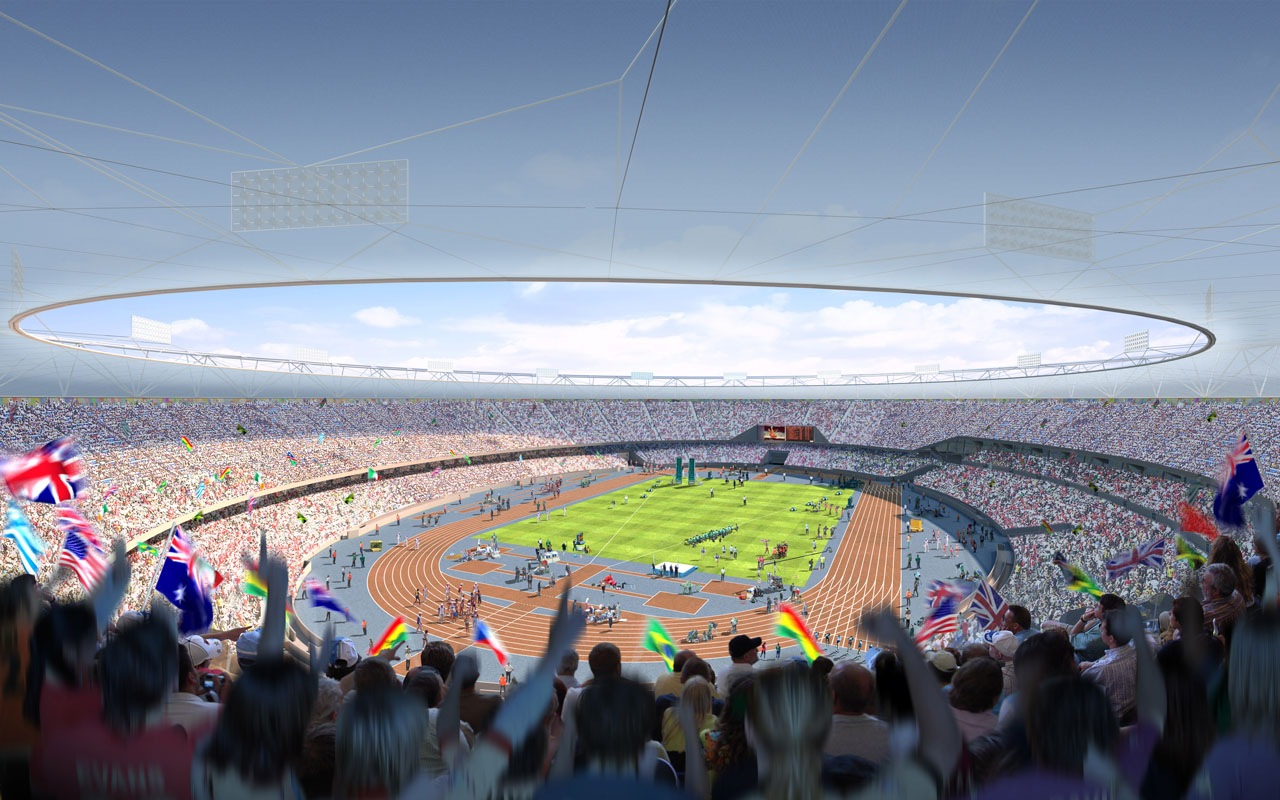
The Dow Chemical Company is funding an exterior wrap for the structure that is made of polyester and polyethylene. The roof structure is supported by cables and covered with a lightweight polymer-based membrane. Inside the stadium, colored glass balustrades enliven the space. Following the Olympic Games, the stadium will serve as a permanent structure used for community events.
Olympic Aquatics Centre | Zaha Hadid Architects
The "gateway" to the Olympic Park is the Aquatics Centre, which was designed by Zaha Hadid, will serve as the venue for swimming, paralympic swimming, diving, synchronized swimming, and the aquatic discipline of the modern pentathlon. Similar to the Olympic Stadium design, a bridge carries spectators into the structure, which is capped by an undulating roof inspired by the motion of waves.
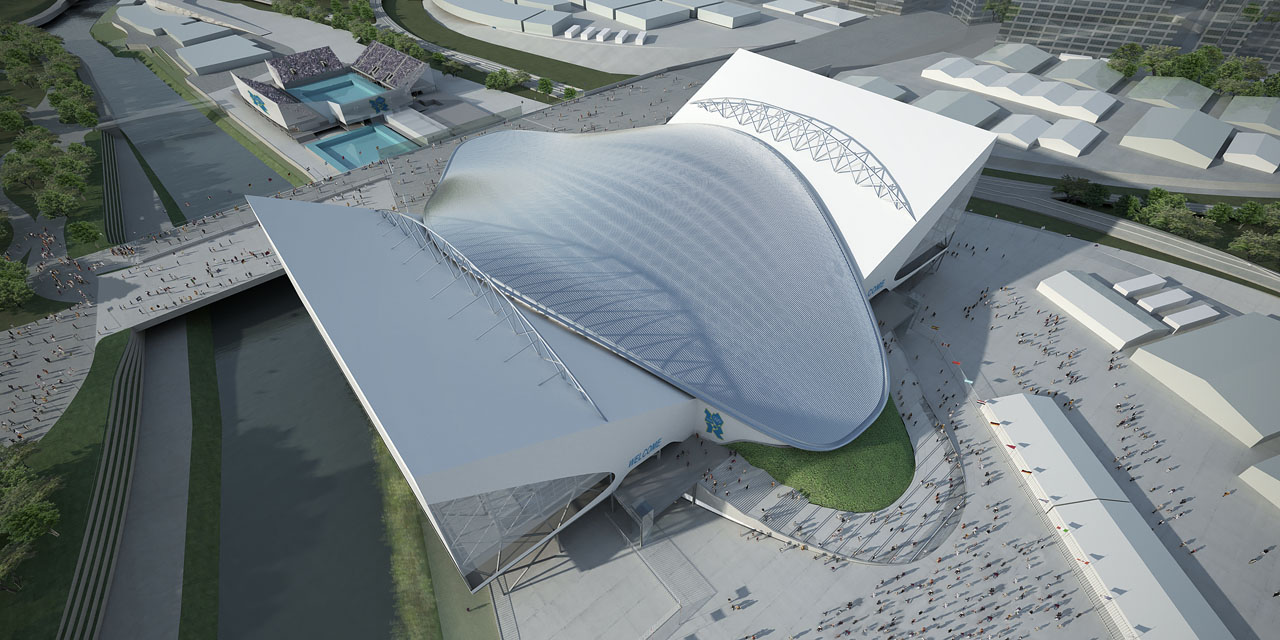
The Aquatics Centre contains three pools: one for training, another for diving, and a main competition pool. The pools are situated on axis with the Stratford City Bridge. The structure accommodates 17,500 spectators beneath its parabolic roof, and its sculptural walls are formed from cast concrete, including the elegant diving platforms.
Olympic Velodrome | Hopkins Architects
The Velodrome is an indoor track cycling venue that contains 6,000 seats. The lower tier is formed of concrete, providing 3,500 seats around the track. The remainder of the seats are suspended in tiers beneath the curving form of the venueís roof, which is supported by a low cable net system. A glass wall between tiers provides a 360-degree view of the Olympic Park, as well as a glimpse of the cyclists in motion for spectators outside. The structure was very sustainably built, incorporating Forest Stewardship Council certified wood for cladding, and it is completely naturally ventilated.
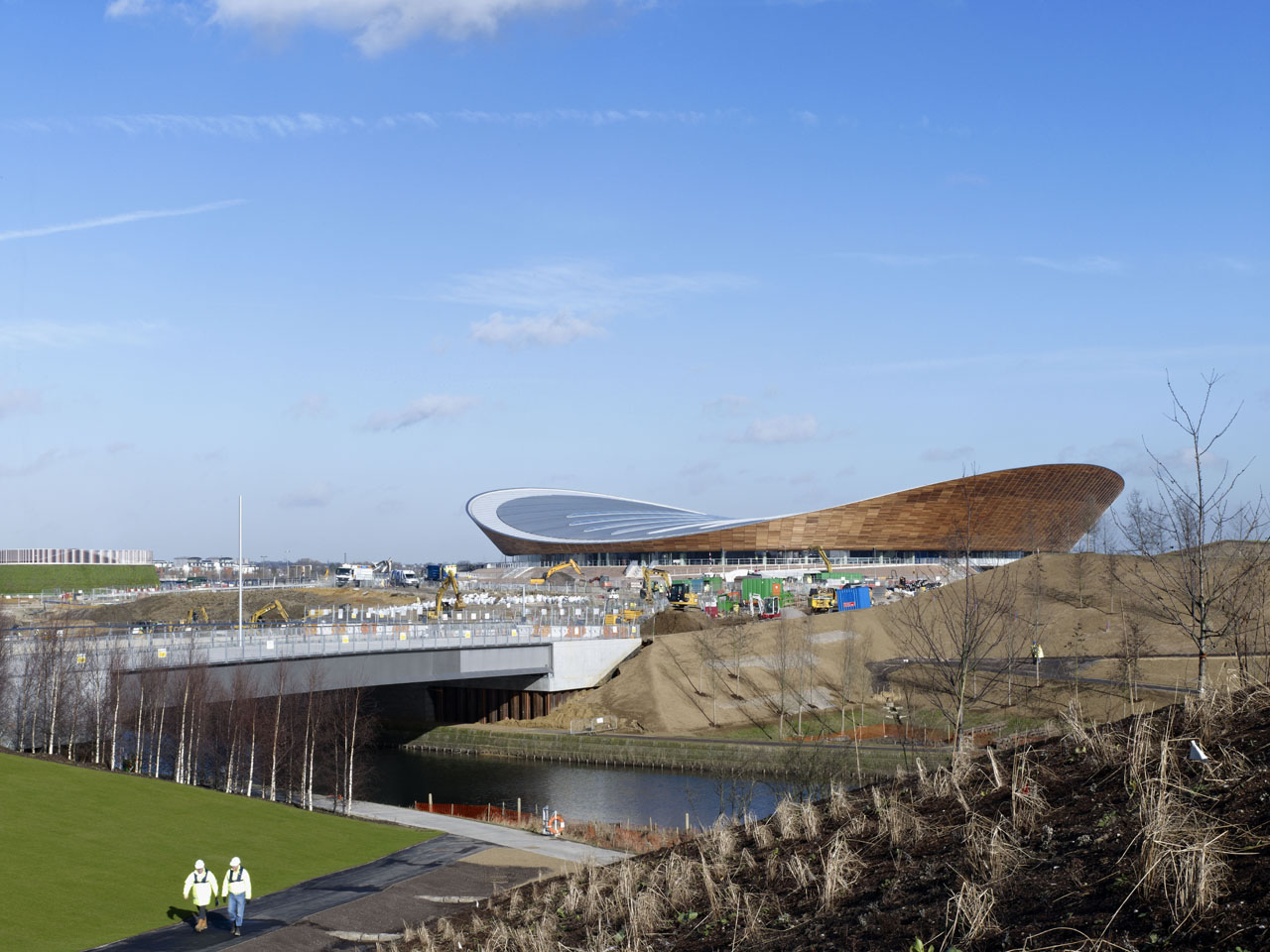
Olympic Basketball Arena | SKM/Wilkinson Eyre/KSS Design Group
One of the largest temporary venues ever built for the Olympic Games, the Basketball Arena will seat 12,000 under a steel frame wrapped in 20,000 m2 of white recyclable PVC membrane. During the events, lighting will animate this surface. Following the Olympic Games, the structure can be disassembled and elements can be reused elsewhere for other events.
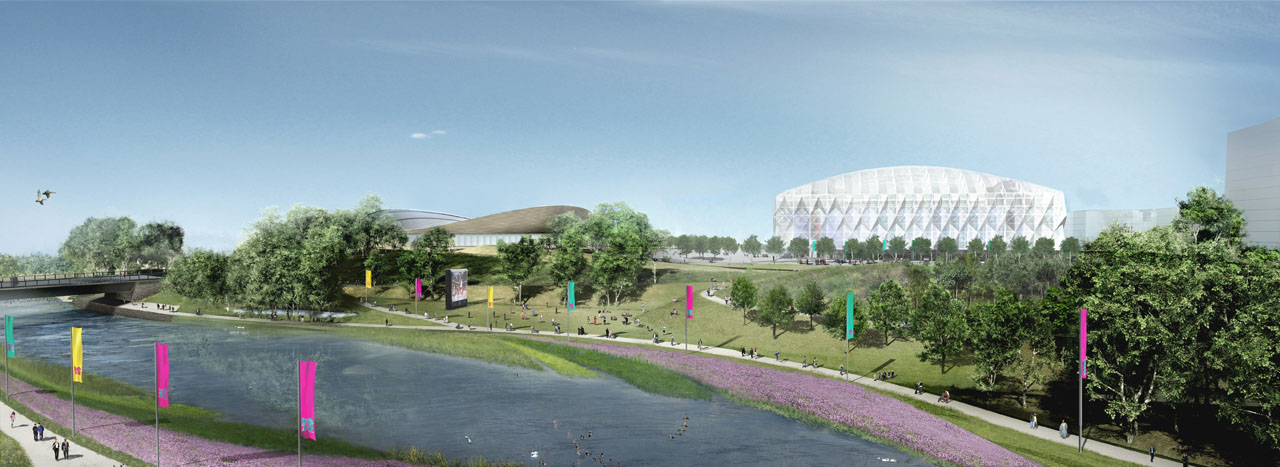
Olympic Handball Arena | Make Architects with PTW and Ove Arup and Partner
Clad in recycled copper, the look of the Handball Arena will evolve as the surface becomes patinated. The interior features flexible, retractable seating that can accommodate a wide variety of events besides handball: basketball, badminton, boxing, martial arts, netball, table tennis, wheelchair rugby, and volleyball. Sustainable features include "light pipes" installed in the ceiling that mimic natural light and a rainwater harvesting system.
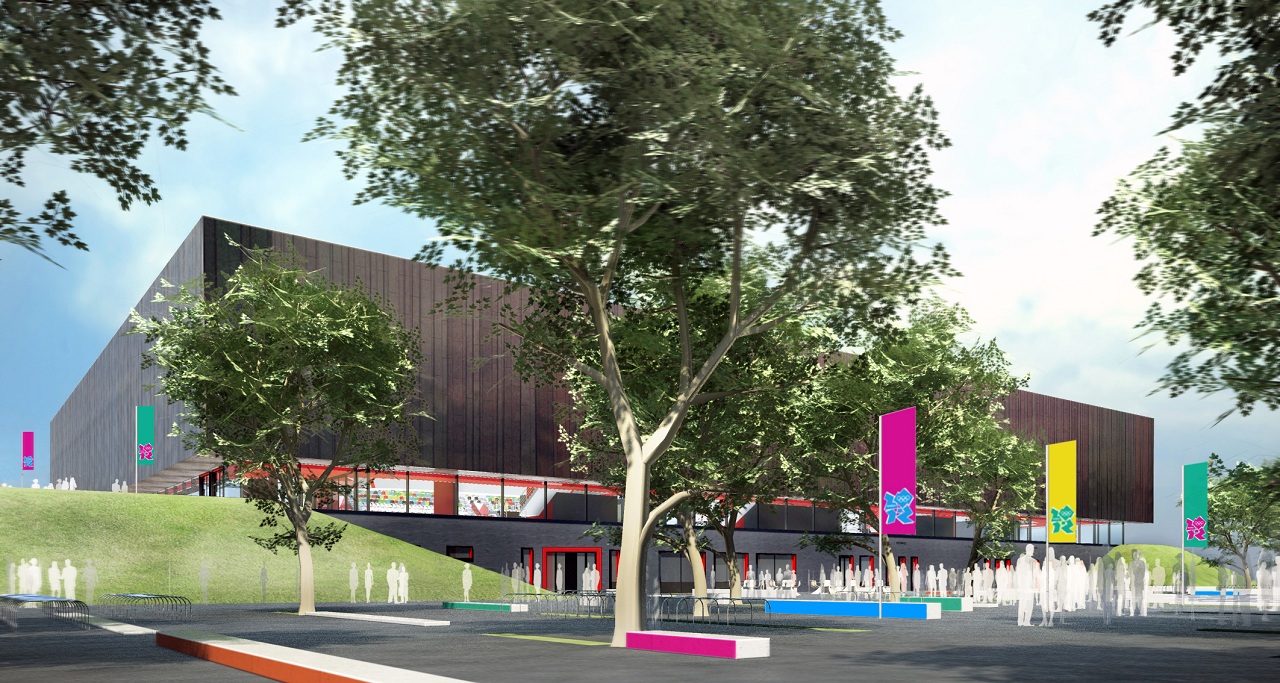
Athletesí Village | Various Architects
The Athletes' Village will house over 17,000 athletes and incorporate dining and shopping and the communal spaces and courtyards reflective of Londonís housing traditions. When the Olympics are over, the complex will provide affordable housing for East London residents.
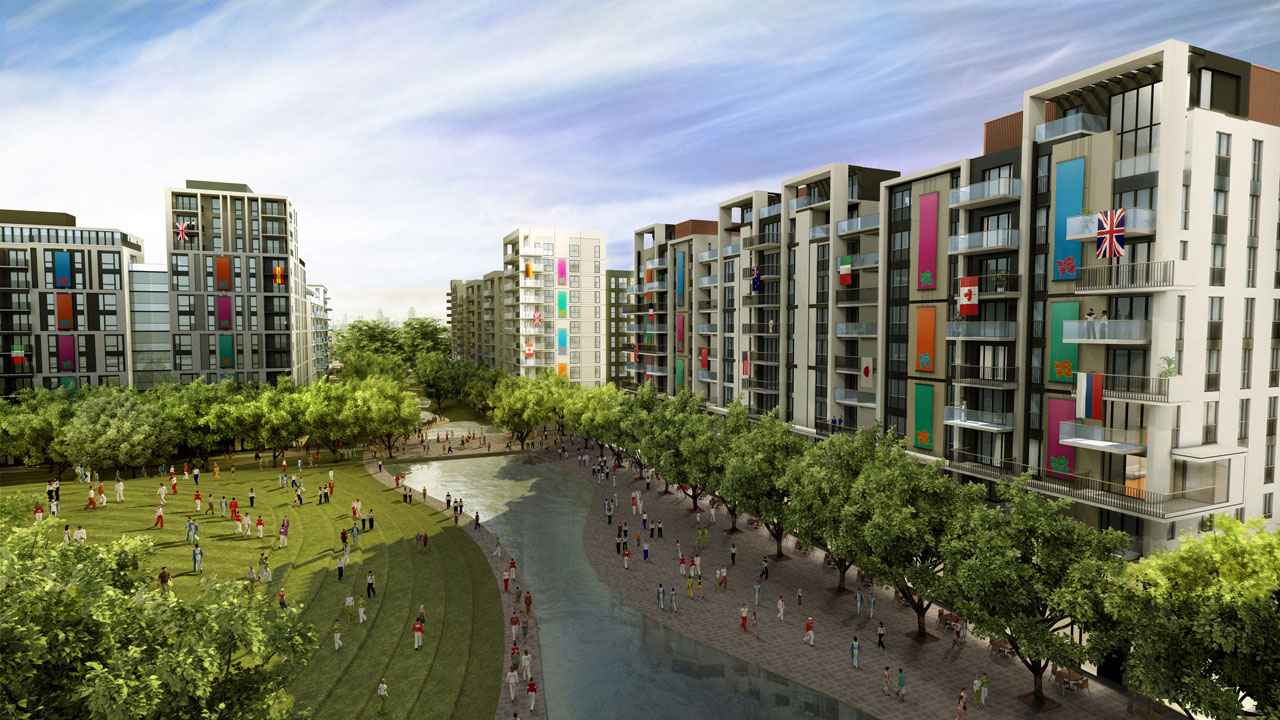

Murrye Bernard
Murrye is a freelance writer based in New York City. She holds a Bachelor's degree in Architecture from the University of Arkansas and is a LEED-accredited professional. Her work has been published in Architectural Record, Eco-Structure, and Architectural Lighting, among others. She also serves as a contributing editor for the American Institute of Architects' New York Chapter publication, eOculus.
Website: www.murrye.com















